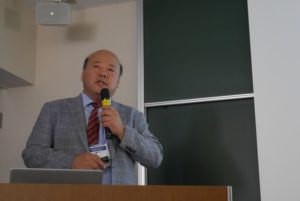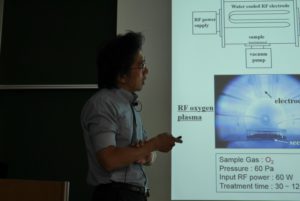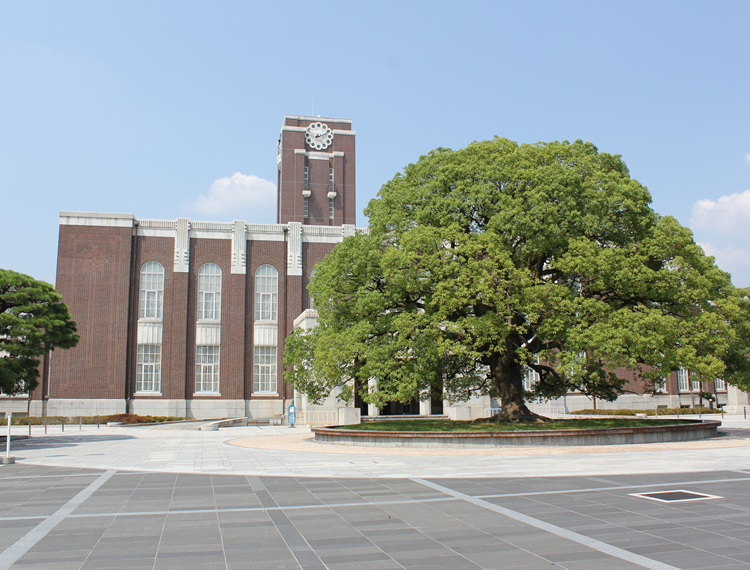Nonthermal Biocompatible Plasma (NBP) Sources and Their Nanoparticle Interaction Characteristics for Plasma Medicine
Eun Ha Choi of Kwangwoon University, Korea, gave an excellent keynote lecture in the oral session of Symposium C-5 in the morning session on September 1. He first presented plasma devices used in Plasma Bioscience Research Center of Kwangwoon University, e.g., nonthermal biocompatible plasma (NBP) Jet, dielectric barrier discharge (DBD) systems, and nanosecond pulsed plasma systems. He introduced plasma diagnostics for NBP jet and DBD systems, and measured various kinds of plasma parameters, such as electron temperature, electron density, radical density, excited nitrogen density, electrical discharge energy, vibration temperature, rotation temperature, and so on. As plasma initiated ultraviolet photolysis and transport, he explained reactive oxygen species (ROS) generation mechanism in extracellular and intracellular region. He also reported that plasma with PEG-coated gold nanoparticles sensitize glioma, suppress cellular transformation by inhibiting growth and epithelial mesenchymal transition (EMT).
Modification of Gene Expression of Plants Induced by Active Oxygen Species in Oxygen Plasma
Nobuya Hayashi of Kyushu University, Japan, gave a keynote lecture in the oral session of Symposium C-5 in the afternoon session on September 1. He presented the effects of oxygen plasma irradiation to plant seeds. He showed that 1. growth enhancement occurred and genes related to energy production were expressed, 2. growth enhanced effects had not passed onto next generations, and 3. genes involved in epigenetics were expressed. These results indicated that the growth enhancement effect due to plasma irradiation was induced by epigenetics. He was going to clarify the relationship between the growth enhancement effect and epigenetics

Keynote lecture scene by Prof. Choi.

Keynote lecture scene by Prof. Hayashi.
